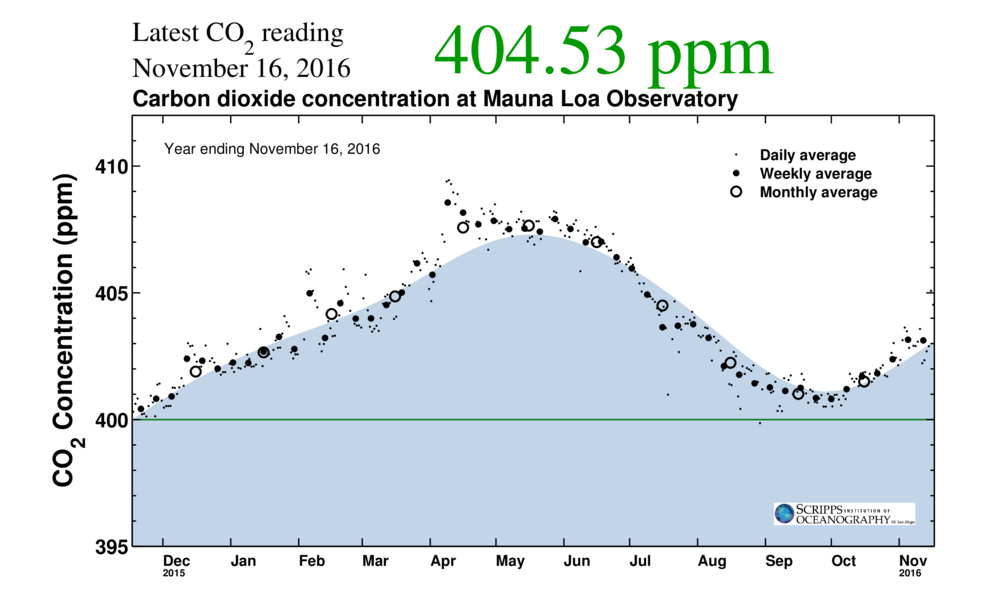Environment & Energy
Related: About this forumAmazon Basin Now Net Carbon Source: Regional Readings From 500 To 800 PPM
Back in June, atmospheric carbon monitors indicated that the Amazon Rainforest was leeching out more carbon dioxide than it was taking in. This is kind of a big deal — because the vast expanse of trees and vegetation in the Amazon represents a gift nature has given to us. For all that lush vegetation draws in a considerable amount of carbon dioxide and stores it in leaves, wood, bark and soil. And this draw-down, in its turn, considerably reduces the overall rate of atmospheric carbon accumulation coming from human fossil fuel burning.
Over the years and decades, this great service has saved the world from an even more rapid warming than it is presently experiencing. But not even the great forests could stand for long against the unprecedented plume of carbon coming from human fossil fuel industry. For the great belching of heat-trapping gas by all the world’s engines, furnaces, and fires is equal to about 4 or 5 of the Siberian flood basalts that triggered the worst hothouse extinction event in Earth’s deep history.
EDIT
 ?w=600&h=360
?w=600&h=360
(During 2015, atmospheric CO2 increased by a record annual rate of 3.05 ppm. This happened during the build-up of one of the strongest El Ninos on record. But as a weak La Nina settled in during late 2016 and equatorial Pacific Ocean waters cooled, annual rates of carbon dioxide accumulation is again on track to hit a new record high. During mid-November, daily CO2 readings hit above 405 parts per million. An indication that rates of accumulation had not at all backed off from present record highs. Image source: The Keeling Curve.)
This rapid build-up is occurring despite a shift to La Nina — in which somewhat cooler ocean surfaces tend to take in more atmospheric carbon — and despite a pause in the rate of carbon emissions increase from fossil fuel related industry around the world.
Large equatorial forests like the Amazon are now producing hothouse gasses rather than taking them in. In the Copernicus Observatory’s surface CO2 measure, we find areas over the Amazon Rainforest where concentrations range between 500 and 800 parts per million — or up to nearly double the present average global atmospheric concentration.
EDIT
https://robertscribbler.com/2016/11/18/rates-of-hothouse-gas-accumulation-continue-to-spike-as-the-amazon-rainforest-bleeds-carbon/
OKIsItJustMe
(19,937 posts)[font size=3]…
What happens to the Amazon thus matters to the world. As we describe in research published in Nature, the biomass dynamics of apparently intact forests of the Amazon have been changing for decades now with important consequences.
…
There are two competing narratives of how tropical forests should be responding to global changes. On one hand, there is the theoretical prospect (and some experimental evidence) that more carbon dioxide will be “good” for plants. Carbon dioxide is the key chemical ingredient in photosynthesis, so more of it should lead to faster growth and thus more opportunities for trees and whole forests to store carbon. In fact almost all global models of vegetation predict faster growth and, for a time at least, greater carbon storage.
…
Arrayed against this has been an opposing expectation, based on the physical climate impacts of the very same increase in atmospheric CO₂. As the tropics warm further, respiration by plants and soil microbes should increase faster than photosynthesis, meaning more carbon is pumped into the air than is captured in the “sink”. More extreme seasons will also mean more droughts, slowing growth and sometimes even killing trees.
…
As the Amazon forest growth cycle has been accelerating, carbon is moving through it more rapidly. One consequence of the increase in death should be an increase in the amount of necromass – dead wood – on the forest floor. While we haven’t measured these changes directly, our model suggests the amount of dead wood in the Amazon has increased by 30% (more than 3 billion tonnes of carbon) since the 1980s. Most of this decaying matter is destined to return to the atmosphere sooner rather than later.
…[/font][/font]